Last updated on
Yes, plumbing is an integral part of construction, which involves installing and maintaining systems used for potable (drinking) water, sewage, and drainage.
Plumbing is indeed a fundamental part of construction. It is integral to the building process, whether it’s a residential home, a commercial establishment, or an industrial facility.
Plumbing ensures that water comes in and out of your home efficiently, contributing to the overall functionality and comfort of your living space.
This article will delve into the specifics of how plumbing fits into construction, the types of plumbing systems used in different structures, and the roles and responsibilities of plumbers during the construction process.
So, if you’re interested in understanding the intricate relationship between plumbing and construction, you’re in the right place.
Stay tuned for a comprehensive exploration of this topic.
Key takeaways:
- Plumbing is integral to construction, involving water, sewage, and drainage.
- Plumbing ensures functionality, disease prevention, comfort, property value, and environmental impact.
- Construction plumbing includes piping, repiping, fixtures, appliances, water and sewer line installation, shut-off valves, and water heater installation.
- Plumbing contributes to construction safety, preventing hazards and promoting fire safety and sewage disposal.
- Plumbing codes set standards for water efficiency, safety, and sanitation in construction.
Table of Contents
Role of Plumbing in Construction
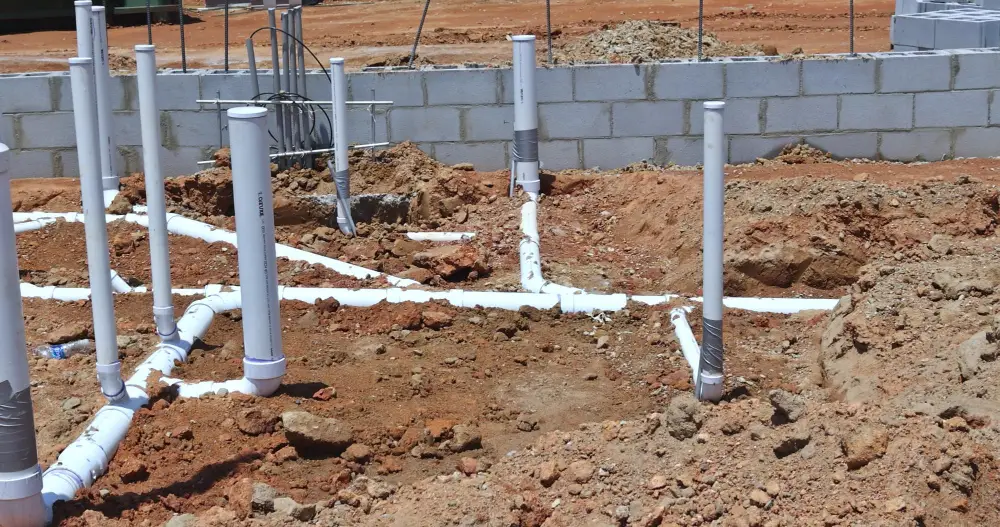
Plumbing is a crucial component in construction that obliges rigorous planning and execution. It directly influences a building’s functionality and the comfort of its inhabitants.
Key points regarding its importance are:
- Functionality: Plumbing ensures basic utilities like water supply and waste disposal function smoothly, from taking a shower to washing dishes.
- Disease prevention: By efficiently managing waste disposal, plumbing systems play a pivotal role in protecting the health of a building’s occupants and preventing the spread of disease.
- Comfort: A well-designed plumbing system guarantees comfortable living standards by providing predictable water temperatures, efficient drainage, and minimal maintenance needs.
- Property value: A competent plumbing setup can enhance the value of a property due to its durability and functionality.
- Environmental impact: Plumbing determines the efficiency of a property’s water usage, directly influencing its environmental footprint.
Understanding these key points provides assurance that comprehensive planning and high-quality materials are vital for a successful plumbing system within construction.
Types of Construction Plumbing: Piping and Repiping
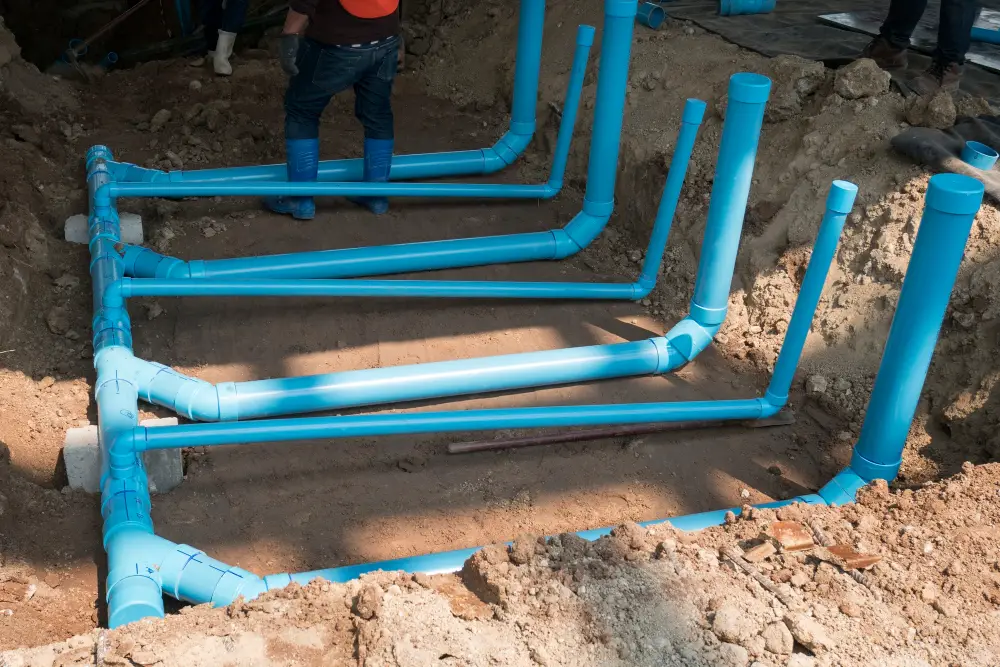
When we discuss the intricacies of construction plumbing, there’s quite a bit to unpack. Essentially, there are two categories in this area, namely piping and repiping.
New construction projects require piping, where an entirely new network of pipes is installed to facilitate the water supply and sewage system in the building. Everything is planned from the ground up, taking the building’s layout into consideration. This is done to ensure the efficient usage of water resources and easy access for repairs.
On the other hand, repiping involves replacing outdated or damaged pipes in an existing structure. This process entails a careful examination of the current plumbing system, pin-pointing potential flaws, and then substituting it with a newer, higher-quality setup. Repiping can often boost the lifespan of a structure and improve its safety standards, providing peace of mind for its occupants.
Every construction project, no matter the size, relies heavily on these two processes. The type of work conducted is contingent upon the condition and requirements of a given concrete structure.
Importance of Plumbing Fixtures and Appliances in Construction

Plumbing fixtures and appliances play an integral role in the functionality and aesthetics of a construction project. They serve as crucial components that dictate the comfort and experience of the occupants.
Sinks, toilets, and bathtubs, for instance, have a direct influence on the day-to-day convenience and quality of life. Their placement and design can highly impact the usability and spatial efficiency of a space.
In the case of appliances like dishwashers and washing machines, their connection points should be carefully considered during the initial construction phase. It ensures unhindered operation and ease of maintenance or replacement in the future.
Further, the installation of energy-efficient fixtures and appliances attract significant savings in terms of water and electricity consumption. This not only caters to economic benefits but also aligns with evolving sustainable living practices.
Lastly, these elements contribute to the overall appeal of the property. Today, a wide range of stylish fixtures and appliances is available that effortlessly blend with various interior themes – an aspect that boosts real estate value.
Water and Sewer Lines Installation in Construction
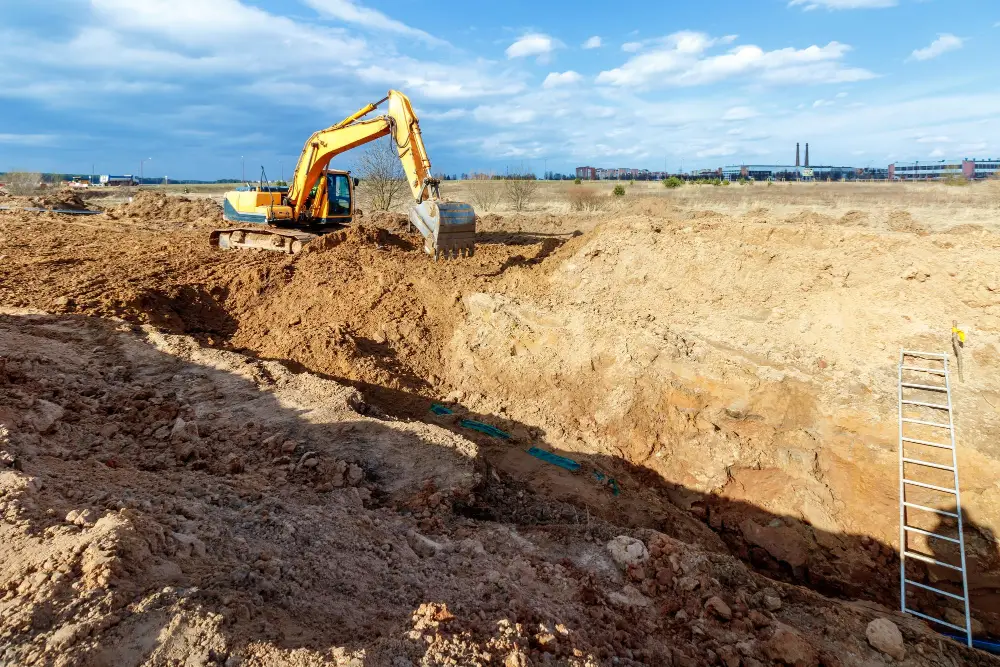
Installing water and sewer lines is an integral stage in any construction project, necessitating precision and expertise. This process involves a series of steps:
1. Excavation: Before laying down any pipes, workers dig deep trenches in carefully plotted routes to accommodate the lines.
2. Pipe Laying: Once trenches are ready, plumbers lay water and sewer pipes. These pipes should adhere to local codes and must be of the correct size to handle anticipated water flow.
3. Insulation: In areas with colder climates, pipes need insulation to prevent issues such as freezing and subsequent damage.
4. Connecting to Main Lines: After establishing both water and sewer lines, plumbers connect them to the main municipal lines.
5. Testing: Post-installation, plumbers conduct a series of tests to seek out and rectify possible leaks or errors in pipe layout.
Failure in this process could lead to problematic leaks, property damage, or even health hazards, reinforcing the necessity for skilled professional involvement. The installation of effective water and sewer lines is thus an essential, intricate component in the fabric of the construction process.
Shut-Off Valves in Construction Plumbing
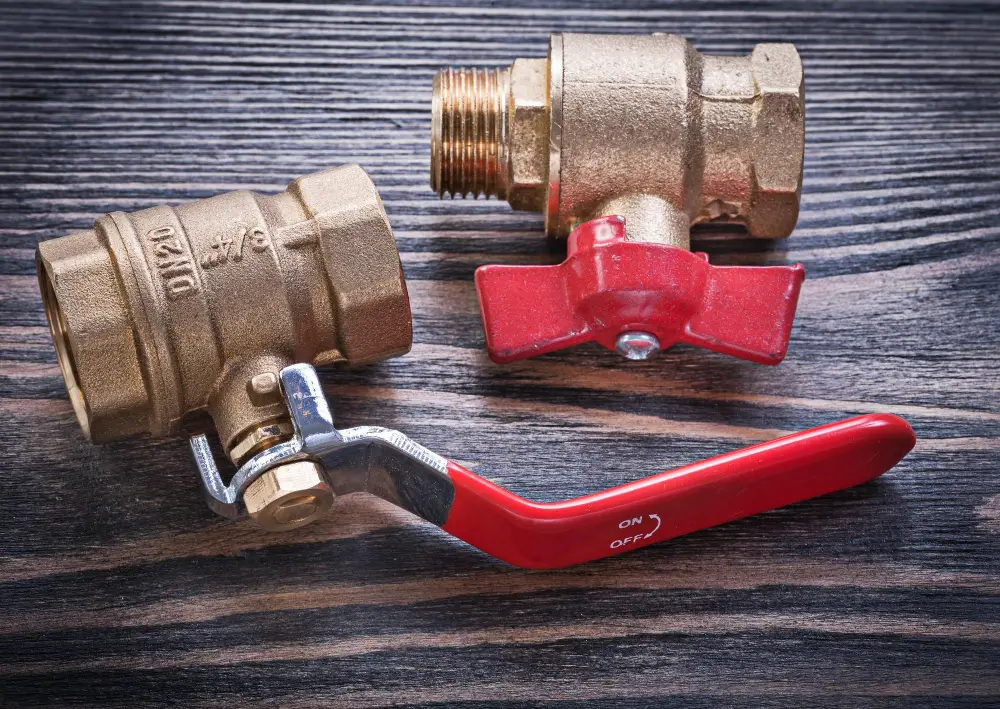
An indispensable element in any plumbing construction project, shut-off valves provide a crucial safeguarding measure. They control the flow of water, allowing for an immediate cut-off when necessary.
This mechanism plays a central part during repairs, maintenance or emergencies such as water leaks. It’s always strategically positioned for easy access – usually under sinks, behind toilets, or at the water heater.
There are several types of shut-off valves, including ball valves (most common in residential construction) and gate valves (typically for larger projects). The option used often depends on the specific requirements of the project.
Their role in ensuring a safe and efficient water system cannot be overstrapped.
Understanding Water Heater Installation in Construction Plumbing

When it comes to installing a water heater in a new construction, several key factors must be taken into account. Firstly, location is paramount. Finding a centralized spot can ensure hot water is evenly distributed throughout the home. The placement should also accommodate for easy access for periodic maintenance and repairs.
Consideration should also be given to the type of water heater – tankless or traditional tank-style. Each has its advantages, such as on-demand heating with tankless models and lower upfront cost with the tank-style.
The heater should be installed by a licensed professional who follows local building codes for safety reasons, these codes may dictate the necessary clearances around the heater, ventilation requirements, and the type of drain pan needed to prevent water damage in the event of a leak. The professional would also handle the task of connecting the heater to your home’s plumbing and electrical systems.
Additionally, energy efficiency ratings should be taken into account. While energy-efficient models may have higher upfront costs, they can save the homeowner money in the long run through reduced energy consumption.
Lastly, maintaining a water heater after its installation is essential to its lifespan and efficiency. Regular flushing to remove sediment and inspection of the system can prevent costly breakdowns and improve performance.
The Impact of Plumbing On Construction Safety
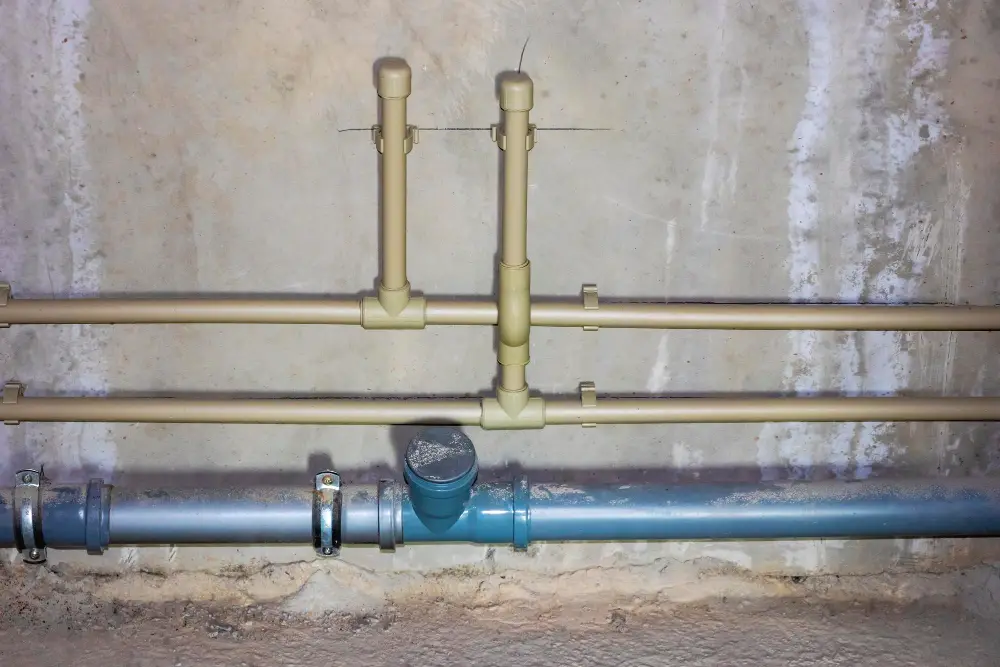
Proper plumbing practices significantly contribute to the safety measures at any construction site. Firstly, by preventing water-related hazards such as flooding, plumbing ensures a safer work environment. Secondly, plumbing also contributes to reducing the risk of any potential health issues arising from stagnant water, such as the growth of mold and fungi. Thirdly, plumbing plays a vital role in fire safety, as the properly installed pipe systems are conducive for fire sprinkler systems. Lastly, appropriate sewage disposal through well-planned plumbing prevents the accumulation of hazardous waste on site. Thus, plumbing is fundamental in maintaining overall construction safety.
FAQ
What is considered part of the plumbing system?
The plumbing system comprises plumbing fixtures and traps, waste and vent pipes, including all sewer pipes within a building and extending up to the building sewer connection two feet outside the building foundation or wall.
How does plumbing work in a building?
In a building, the plumbing system operates by utilizing two separate subsystems, with one directing freshwater in under sufficient pressure for distribution, while the other efficiently carries wastewater out.
What are the different types of plumbing systems in construction?
The different types of plumbing systems in construction include potable water supply plumbing, sanitary drainage plumbing, stormwater drainage system, and traps, and vents plumbing systems.
How do plumbing codes affect building construction?
Plumbing codes significantly impact building construction as they set standards for installation and maintenance of plumbing systems ensuring water efficiency, safety, and proper sanitation.
What role does a plumbing contractor play in the overall construction project?
A plumbing contractor is responsible for installing and maintaining water supply and drainage systems, including the installation of plumbing fixtures and appliances in a construction project.




